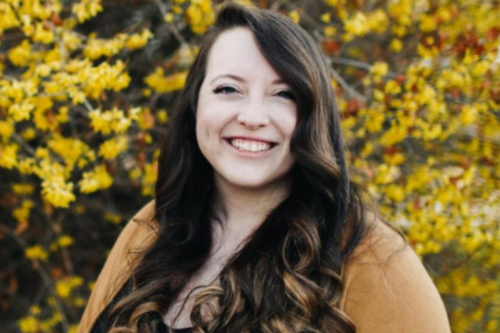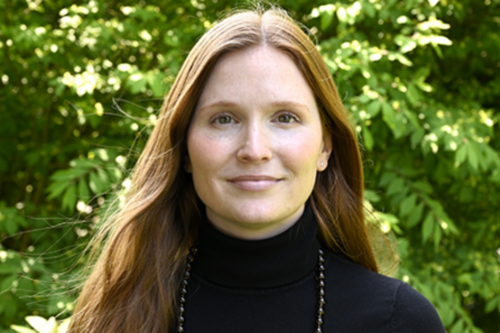March 4, 2024
Every March, we celebrate two special days – International Women’s Day and International Day of Forests. Despite the significance of these events, a reality still exists for women in forestry.
Women make up just 16% of forestry and conservation professionals in the United States, according to 2019 data from the Society of American Foresters. The field also lacks racial diversity, with the U.S. Census finding that less than 3% of foresters and conservation scientists identify as African American. In Canada, that number is higher, with 17% of women in forestry, but only 7% of the workforce is Indigenous (including women). This underrepresentation of women in the forest and conservation sector, especially Black and Indigenous women, underscores the need for greater inclusion across the US and Canada.
So, I want to introduce you to three incredible women in forestry. By sharing the perspectives of these women, we hope to encourage and inspire greater participation by women of diverse backgrounds in the forest and conservation sector. After all, if you can see it, you can be it.

Meet Asia Dowtin
Assistant Professor at the Michigan State University Department of Forestry Member, PLT Education Operating Committee
Asia Dowtin, PhD discovered her passion for the environment at a young age. Initially fascinated by meteorology, she eventually found her true calling in climatology, earning a master’s degree in Geography and a doctorate with a focus on Urban Forest Hydrology.
Asia’s journey was inspired by the presence of Black women in the field, notably Vivian Brown, a meteorologist. Reflecting on her early aspirations, Asia states, “I remember being so inspired by seeing a Black Woman on the television screen and by the fact that she was giving national-level insight to weather predictions and recommendations on how folks should prep for pending weather-related hazards. I knew then that I wanted to be like her.”
Although she ultimately pursued a path different from meteorology, much of the guidance that led Asia to her current position came from accomplished and highly respected women in earth sciences and natural resource management fields. Asia emphasizes the importance of mentorship and sharing, “Receiving those votes of confidence has helped me each step along the way.”
Asia’s current role involves teaching urban and community forestry at Michigan State University. Her research focuses on quantifying hydrologic and nutrient cycling in urban forests to inform effective management plans. She finds joy in making real-world connections for the scholarship in urban and community forestry.
“The most rewarding aspect of my current job is that I have an extension appointment. As such, I have the responsibility and privilege to work with a vast array of stakeholders, helping them to find useful applications for the research my colleagues and I are conducting. I appreciate being able to make real-world connections for the scholarship that is being done in urban and community forestry,” says Asia
Her proudest accomplishments are linked to her students, stating, “I can’t tell you how happy and proud it makes me to see them achieve monumental things while they’re still in school, and all the more, to see the phenomenal things that they go on to do post-graduation.”
Additionally, she shares, “I am very grateful to have been appointed by the US Secretary of Agriculture to the National Urban and Community Advisory Council. What a time it is to be helping to shape the future of urban and community forestry in the United States, and what an honor it is to be working alongside my fellow council members to do so.”
Offering advice to aspiring professionals, Asia emphasizes being open and honest about interests and goals. She encourages the development of a supportive community of peers and mentors, acknowledging the different perspectives they bring.
“The longer I work, the more I realize there’s so much that I still don’t know, despite the degrees, number of years in the field, or accolades. The best ways that I’ve been able to fill these personal ‘knowledge gaps’ is by learning from other people. To me, that is the value of diversity in the field of forestry and conservation,” adds Asia.

Meet Beth Hill
Outreach and Education Manager at the North Dakota Forest Service, North Dakota PLT State Coordinator
With a bachelor’s degree in Soil Science from North Dakota State University, Beth Hill has spent her whole career in her home of North Dakota, first as a Soil Scientist, then as an Agriculture and Natural Resources Extension Agent, a Community Forestry Specialist, and now in her current role at the North Dakota Forest Service.
Her journey into forestry began in high school through participation in the Envirothon competition, a pivotal experience that opened her eyes to natural resource fields. Reflecting on her early exposure, Beth shares, “My advisor, Val Smallbeck, really saw potential in me and encouraged me to join, and I can’t thank her enough! As a city kid, I didn’t have a lot of exposure or experience with the outdoors, so this competition really opened my eyes to natural resource fields like soils and forestry.”
Beth’s work focuses on outreach, education, and fostering connections between communities and forests in North Dakota. “When people think of North Dakota, trees are definitely not the first thing that comes to mind. It’s incredibly satisfying to see a tree that I helped a community plant grow and flourish,” says Beth.
Her role involves diverse responsibilities, from managing agency communications to providing forestry education to PreK-12 students statewide. Beth takes pride in her agency’s impact, stating, “Just last year in direct education alone, we reached more than 33,600 students, teachers, and other customers.”
Beth’s biggest piece of advice is to find a mentor, “Having someone, especially a woman, in the same field to ask questions, help you make connections, and advocate for you is invaluable. Connections are so important!”
She encourages individuals to surround themselves with peers sharing a common career field, citing her positive experience with an agricultural sorority. Beth emphasizes the importance of not fearing career changes and pursuing personal fulfillment.
“Often, it isn’t best to just do what we have always done; by challenging the status quo and asking questions, we can see our mindsets change and the resources improve because of it. Each person brings a unique set of skills to the table, and different perspectives are essential for growth,” adds Beth.

Meet Christine Leduc
Vice President of Communications and Government Relations at the Sustainable Forestry Initiative (SFI)
Christine Leduc is a Registered Professional Forester with over a decade of experience in forestry, policy, communications, and more recently, Indigenous relations. Holding a Master of Forest Conservation from the University of Toronto, Christine currently leads SFI’s binational communications team. With a unique pathway going from government to private sector to non-profit, Christine is especially interested in investing in young people and encourage women to pursue career in forestry to achieve leadership positions.
Her academic journey at the University of Toronto ignited her passion for sustainable resource management, laying the foundation for an impactful career in forestry. Being a female forester from the city came with a unique set of challenges when she first began working in the bush. As she transitioned from living in downtown Montreal to Northern Canada, she recounts the shift from the urban setting using the metro as the everyday commute to learning to drive a truck, navigating forest access roads safely, and spending long days alone in the bush, some of which she did while pregnant.
Reflecting on her experiences, Christine emphasizes the importance of overcoming self-doubt and fear, particularly for young women pursuing their dreams in forestry. Advocating for greater female representation in the sector, she states, “Forestry has historically been male-dominated, yet women represent half the population. How can we make the best decisions when our leadership and our workforce don’t reflect the society we live in?”
Christine stresses the significance of women bringing unique perspectives to decision-making processes. She encourages women to fearlessly pursue their dreams and apply for jobs even if they feel unqualified, highlighting the exciting transformations occurring for women in forestry. “It’s an exciting time to be a woman in forestry. In my career, I’ve seen so much progress when it comes to creating an inclusive workplace for women. It’s time to join the sector and add to this momentum,” says Christine.
 Discover Rewarding Green Careers in the Forest & Conservation Sector
Discover Rewarding Green Careers in the Forest & Conservation Sector
In celebrating International Women’s Day and International Day of Forests, the stories of Asia, Beth, and Christine inspire and underscore the imperative for greater representation, mentorship, and diverse perspectives in forestry.
Interested in a green career connected to forests? With a wealth of resources available, women and individuals of all ages can discover the many rewarding green careers connected to caring for our forests and natural resources.
Here are some great resources to learn more:
- Browse green jobs and assess your STEM skills on plt.org/WorkingForForests. Discover the variety of careers available and how you can make a difference.
- Learn from Black American professionals in the field with the Journeys of Black Professionals in Green Careers guide, which shares stories and insights to inspire the next generation.
- Explore how the PLT Green Mentor program connects young people ages 18-30 with green professionals across Canada and the United States to support the next generation’s efforts to build their forest and conservation knowledge and career goals—and gain new perspectives while networking.
- Use the Green Jobs guide to expose youth ages 12-25 to the many green career paths related to forestry and natural resources. Bring lessons into classrooms, youth programs, field trips, and more.
- Check out PLT’s Forest Literacy Framework. The framework offers 100 forest concepts for grades K-12, organized into the following four themes: What is a forest? Why do forests matter? How do we sustain our forests? What is our responsibility to forests?


